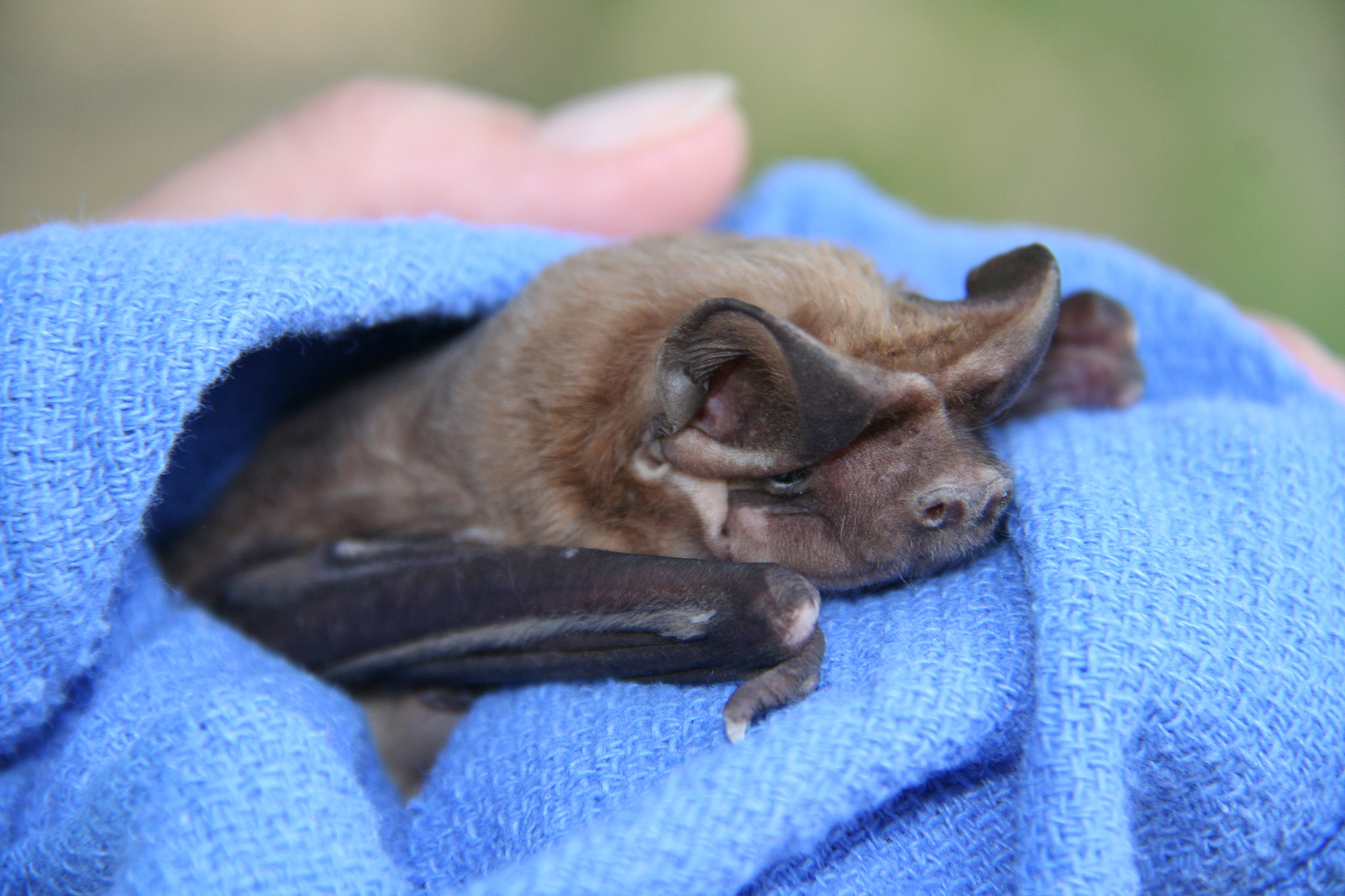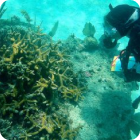
The Florida Bonneted Bat: What are they?
The Florida bonneted bat, Eumops floridanus, is the largest insectivorous (insect-eating) bat in North America. It’s the United States’ rarest bat – fewer than 1,000 are believed to remain — and is known only from southern Florida.
Florida bonneted bats can reach a body length of 6.5 inches with a wingspan of up to 20 inches. Their hair color varies from black to brown to grayish or cinnamon brown, and their large, rounded ears give them the appearance of wearing a bonnet, hence the name. And another very cool thing: the Florida bonneted bat is the only bat in North America that uses an echo-location frequency people can hear when the bats are hunting for moths and other flying insects over the rooftops of Miami and the pine flatwoods of southern Florida.
Florida bonneted bats have not been well studied, due in part to there being very few known roost sites, and little is yet known about their movement within their range, roosting habits, and preferred foods and habitats. Miami’s few remaining pine rocklands appear to attract them, and they’ve been found to roost in woodpecker-created tree cavities, Spanish tile roofs and bat houses designed for their larger size. The largest known populations are at the FWC’s Babcock/Webb Wildlife Management Area near Punta Gorda.

As is true for most species of bats (there are at least 1500 species worldwide!), the greatest threats to Florida bonneted bats are loss of habitat, including the destruction of natural roosts via development and sealing up building cavities where bonneted bats are living. Hurricanes can eliminate local roosting populations and are a serious threat to the species as a whole, because one hurricane can impact the bat’s entire range. Pesticides may also threaten the bonneted bat by diminishing the population of insects it eats to survive.
The lack of scientific information about what this species needs to survive is also a serious concern, as biologists lack basic understanding of its life history and habitat requirements to inform management decisions. Our Foundation is helping fund efforts by Bat Conservation International, FWC, the U. S. Fish & Wildlife Service and the University of Florida to locate and study Florida bonneted bat colonies and determine how we can ensure their continued survival.
Why should we care if bats disappear?
Bats have been given a bad rap by horror movies and popular culture, but bats really want to avoid humans and not to harm us. Bats benefit humans and nature in three ways. Bats around the world eat trillions of insects every night; scientists estimate bats save U. S. farmers alone at least $3 billion/year in reduced crop damage and lower pesticide use. Other species of bats are important pollinators of cacti and agave plants (from which mescal and tequila are made), while tropical fruit-eating bats spread seeds across many miles in a single night, making them important to the regeneration and diversity of the world’s rainforests.
How can I learn more and help?
To find out more, check out this plan crafted by the Florida Fish and Wildlife Conservation Commission:













